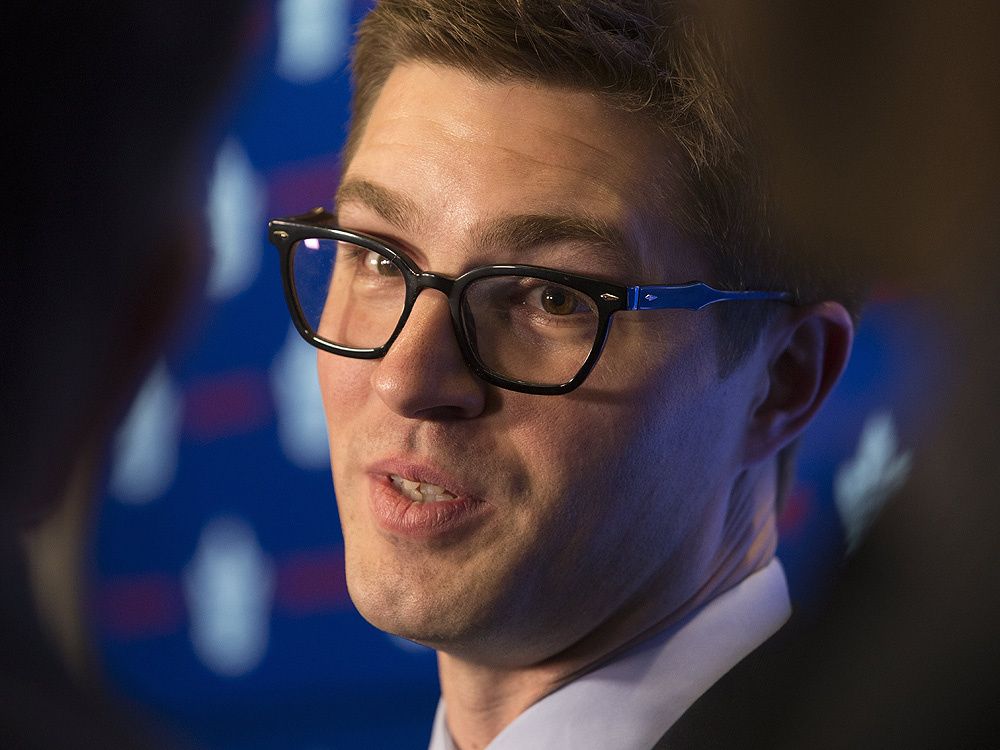It’s been a busy start to the offseason for the Toronto Maple Leafs thus far, so there is plenty to get into today.
I didn’t cover Zach Bogosian in this article, but you can find my thoughts on that signing here.
Leafs sign T.J. Brodie (Four years, $5 million AAV)
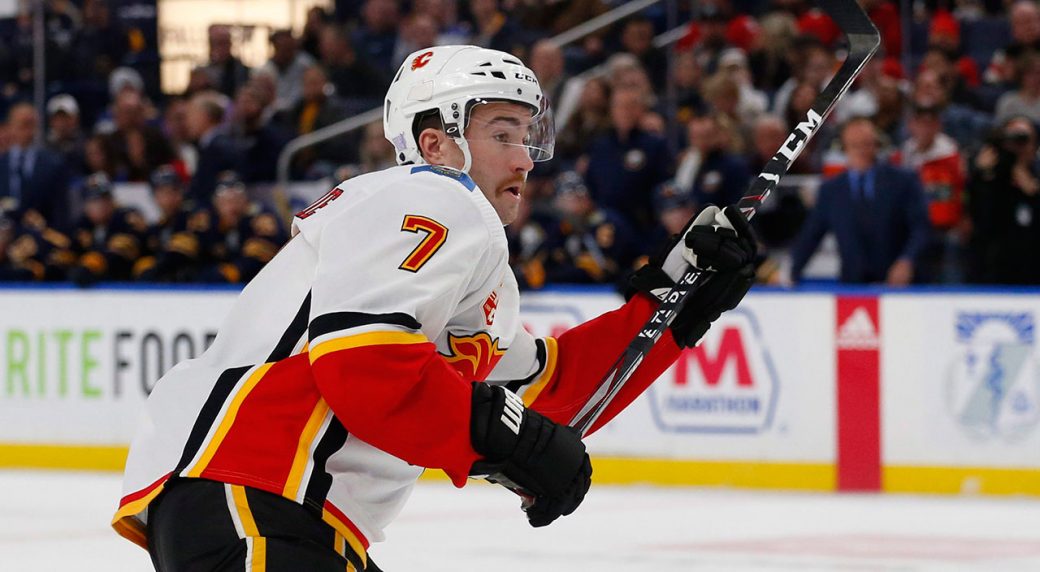
When the free-agent market opened, I was expecting the Leafs to address their defense via trade. Finding Morgan Rielly a legitimate top-four partner was long overdue, and given that Torey Krug is a left-shooting offensive defenseman, the only free agents who fit that need were Alex Pietrangelo, Chris Tanev, and TJ Brodie. It didn’t make sense to try to squeeze Radko Gudas or Matt Benning into a top-four role — the Leafs have tried to pair Rielly with third-pairing types in the past, and it’s never worked.
The Leafs were only going to sign Pietrangelo if he took a big hometown discount. They would have had to move heaven and earth to fit him in. While he’s an outstanding player, giving a seven-year deal to a soon-to-be 31 year old never made much sense, especially when you’re already paying big money to a 30-year old John Tavares. That contract is likely to be a problem when Auston Matthews is still in his prime. Unless Pietrangelo was willing to settle for a partial no-move clause, the Leafs would have been in rough shape by year five. He got his big deal.
Chris Tanev and Travis Hamonic didn’t make a lot of sense, either. You’re lucky to get 60 games out of Tanev in any given season, and he struggles to move the puck, so if he loses a step, he’s going to decline in a hurry. Given his injury history, I had no interest in giving Tanev a four-year deal, which is what he ended up getting from Calgary. While Hamonic might end up being cheaper, he graded out very poorly defensively this season by RAPM, and he loses a lot of his value due to his struggles moving the puck. Hamonic has also shown a preference to play out west in the past, and I see him as more of a slightly upgraded version of Cody Ceci. I just don’t think he was going to move the dial enough.
T.J. Brodie was essentially the only free-agent option for the Leafs. Given that the market was stronger on the right-side and weak on the left (other than the offensive-tilted Krug), I expected a team like the Rangers to swoop in with a big offer. The Flames seemed interested in bringing Brodie back as well, and given his ability to play on either side, the list of potential suitors was significant. I was expecting there to be a bidding war for Brodie, to the point where someone gave him $5.5 million per season, maybe a fifth year, and certainly expansion-draft protection.
Unless Brodie took a discount to play at home, I’m quite surprised that the Calgary Flames didn’t match this offer, as they turned around and gave a 4 x $4.5 million deal to Tanev. I’m also surprised that Krug got three extra years, and $1.5 million more per season, given that he’s never played on a shutdown pairing (though I did expect him to get a bigger deal). I doubt the Leafs were eager to give Brodie a fifth year, and I think they were ready to make a move via trade if he priced himself out of their range.
Surprisingly, the Leafs don’t even have to protect Brodie in next year’s expansion draft. Having this flexibility is incredibly important. What if Justin Holl looks great on a shutdown pairing with Jake Muzzin all season? What if someone in the top-four gets hurt early on, and Travis Dermott steps up and has a breakout season? What if Brodie is as disappointing as Tyson Barrie was? I expected a player of Brodie’s calibre to get expansion draft protection in his deal. This is part of the reason why it looked like the trade route was the most likely option.
Let’s say that Brodie is left unprotected in the expansion draft. If he gets taken by Seattle, when there’s still $17.5 million to be paid out over three years, then the Leafs probably got a good season out of him. They’d get that $5 million of cap space back and could re-allocate that money next offseason. This would also mean that the Leafs wouldn’t lose another player who was on their roster as of June 30th of this year. It reminds me of player options in baseball — if the player leaves, that means they can get more money elsewhere, and you probably just got their best season(s) at a bargain price.
Signing Brodie does not come without some risk. He graded out extremely well by RAPM last season, but his year-to-year results are not quite as consistent as someone like Muzzin. I don’t think he’s going to be terrible, but there’s at least a chance that he ends up being closer to a league-average defenseman for the Leafs rather than a true top-pairing guy. After all, the majority of us thought that Barrie was going to help the Leafs, and he basically did the opposite of that.
With $7.5 million due to him in the final year of his contract, the Leafs will have a tough time getting out of that contract if he’s mediocre. However, with a limited no-trade clause in the final year, they will at least have the option to do a Marleau-style deal for cap space. Of course, we’ll hope that Brodie is even better than expected, but it’s good to have options in case everything goes downhill.
Brodie gives the Leafs another legitimate top-four defenseman. Rielly is a good player who struggles defensively, which left Muzzin as the only true top-four defenseman who defends well. Barrie was atrocious in his own end, and as long as Lehtonen is respectable defensively, the Leafs should be much improved in that regard (and if he’s bad, he’ll likely be out of the lineup by mid-season). It’s tough to know if I would have preferred MacKenzie Weegar or David Savard, as I don’t know what the asking price was, but it looks like the Leafs got a pretty good player for a reasonable price.
Leafs sign Wayne Simmonds (One year, $1.5 million)
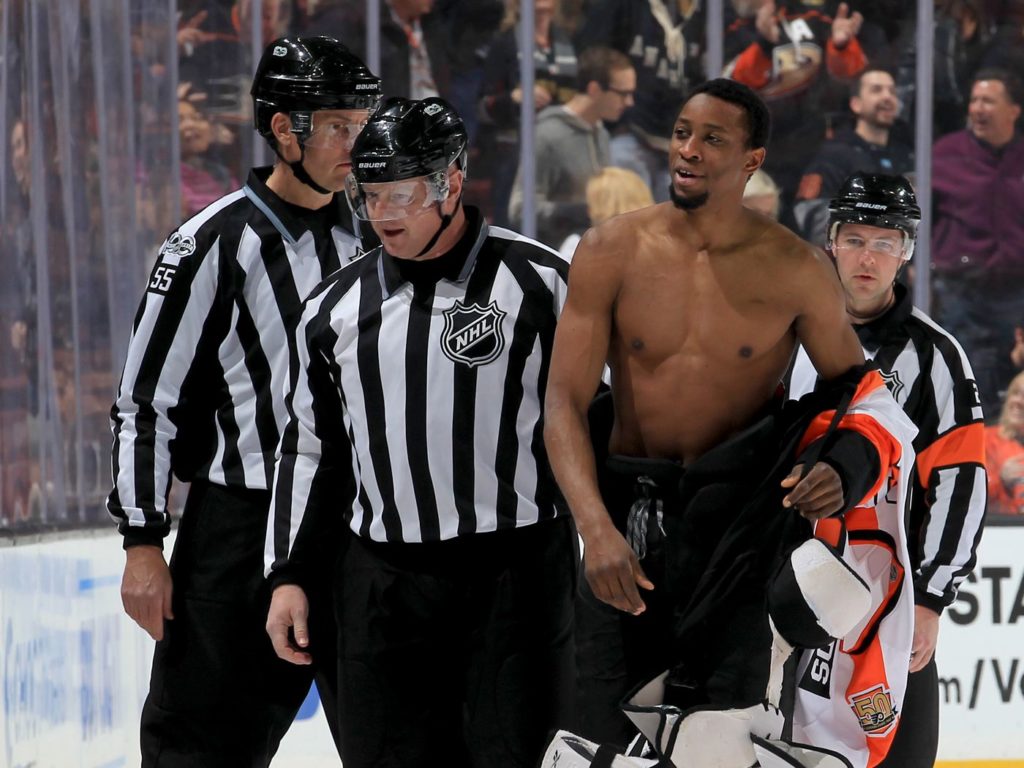
The Leafs wanted to add some grit and leadership to their bottom-six. We knew they were likely going to replace Kyle Clifford in some capacity, and we knew they weren’t going to sign a Colton Orr type. Some will argue that they should have used the money to sign a more skilled player, but there are 31 teams who want some grit on their roster. I’m not going to knock the Leafs for thinking that they were lacking in that area.
If you’re going to add some grit and leadership, this is the way to do it. You don’t give big term and big dollars to the Milan Lucic and David Clarkson types. You don’t give Matt Martin four years and pay him like a third-line winger. You don’t spend your first-round pick on Nick Ritchie. You don’t give up a haul in a trade. You sign a player for $800k more than the league minimum salary and find one who can score the odd goal.
There’s at least some scoring upside to signing Wayne Simmonds. He was a consistent 45+ point player prior to the last two seasons, and he’s just one year removed from scoring 17 goals. He’s 32, not 40, and if he’s healthier than he was in the past, there’s at least a chance that he becomes the solid top-nine contributor that he used to be. However, it’s worth acknowledging that he’s been horrendous in terms of both goals above replacement and expected goals above replacement over the previous two seasons, so I wouldn’t be penciling him in for a top-nine role anytime soon. He best fits on the fourth line.
Simmonds will be a fan favourite in Toronto, and given that the Leafs were looking to add some leadership and grit to their roster, I don’t mind this signing. Similar to what I said in my Bogosian article, the biggest risk is that Keefe overplays him if he’s struggling. If he’s playing with Matthews or Tavares, I probably won’t be very happy. I’m not sure that I’ll like him on the third line either, but if he’s playing on the fourth line all season, I expect him to be fine.
Ultimately, I like Simmonds, I like what he brings to the table, and I’m excited to see him play for his hometown team. I predicted that he would sign with the Leafs in my Free Agent Predictions article, and I’m not going to get too worked up over signing him for $800k more than the league minimum salary for just one year. This signing could make it a bit tougher for Kyle Dubas to continue to add depth, but he knew that when he signed this deal. I think he’ll be able to navigate through it.
Leafs Trade Andreas Johnsson to New Jersey for Joey Anderson
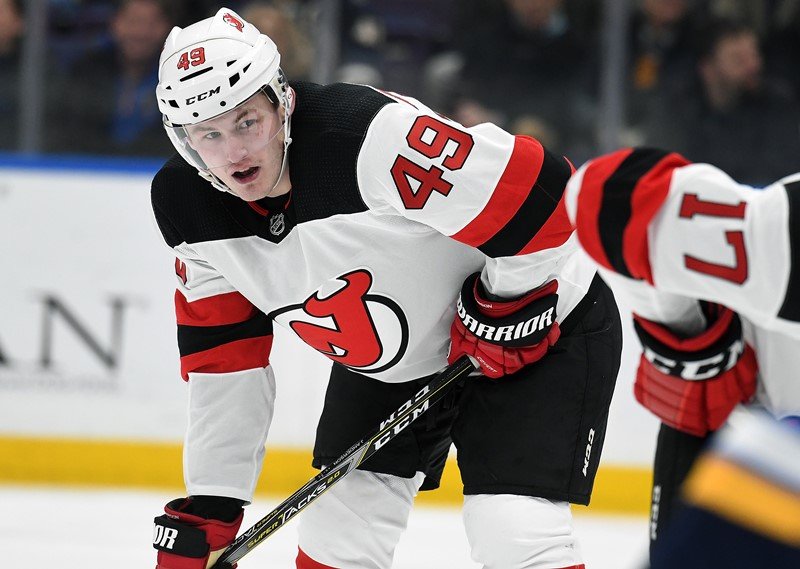
Adding an established top-four defenseman was priority A, B, and C. We knew that one of Andreas Johnsson or Alex Kerfoot was going to be traded as a result, and given the state of their defense, that was completely understandable. Johnsson is a good player, but in a market where you can get a player like Craig Smith for less than him, the Leafs did well to get a solid asset for him. This trade certainly makes the Leafs worse off in the short-term, but everyone knew this was going to be the price to pay to acquire a legitimate top-four defenseman.
In my view, trading Johnsson instead of Kerfoot was the right call. Johnsson is a good player who will have plenty of success in New Jersey, especially if he plays with Nico Hischier or Jack Hughes, but the Leafs couldn’t afford to part ways with a center given their current depth chart. I’ll take Johnsson over Kerfoot as a top-six option on the wing, but Kerfoot is a perfectly fine third-line center — I have little doubt about that. Of course, Kerfoot could still end up getting traded, but I don’t think they make that move until they have another good option up the middle. You can’t start the season with Pierre Engvall and Jason Spezza as your two best bottom-six center options.
I’ve watched a few of Joey Anderson‘s games since the trade, and frankly, I’m surprised they got this type of return given the market. He reminds me a lot of Connor Brown, and while he doesn’t seem to have a ton of scoring upside, he’s a hard-working player who every coach loves. Even if he doesn’t make the Leafs out of camp, he’s still likely going to play NHL games this season. I love Johnsson’s game — and he’s going to be 20+ goal scorer next season — but if I’m the Devils, I would have considered keeping Anderson and signing one of Smith or Tyler Toffoli instead.
Ultimately, this was a pretty straight forward deal for the Leafs. They needed a top-four defenseman, and they knew that was going to cost them one of Johnsson or Kerfoot. They chose to trade the winger over the center, which made perfect sense. Johnsson’s name was out on the trade market for a while, so they simply took the best offer they received.
Leafs Sign Jimmy Vesey (1 year, $900k)
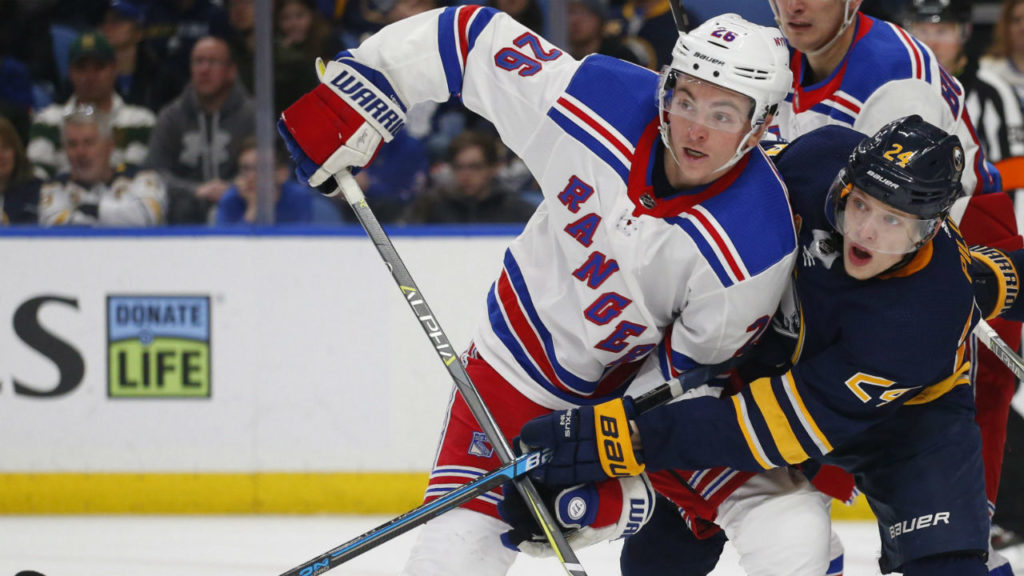
Jimmy Vesey could be a solid addition to the bottom-six. Toronto’s scoring depth was a problem against Columbus, and trading both Johnsson and Kapanen hurt them in this area. He’s not the top-six winger that he was hyped up to be, but the Leafs needed to make a cheap addition on the left side, and Vesey does have three 16-goal seasons in four years. He’s 6’3″, has a good shot, and generates a fair amount of takeaways.
The big question with Vesey is his defensive play. Prior to this past season, both Evolving Hockey‘s RAPM and HockeyViz‘s Isolated Threat considered him to be weak defensively, but he was right around league-average this season. The question becomes: Did he actually improve defensively? Or was this just a one-year blip in the numbers?
On the surface, there’s very little risk here, as you can bury his salary in the AHL if needed. However, his father works for the team, and I hope this doesn’t stop them from cutting him if he gets off to a rough start. Assuming they treat him just like any other player, this looks like a fine signing to me, although there were a few other free agent forwards who signed for one million or less who I would have preferred.
Vesey was terrific playing with Kerfoot at Harvard, and we’ll see if they can re-kindle some of that magic (as long as Kerfoot isn’t traded). They need someone in the bottom-six who can put the puck in the net, especially if they run into injury troubles, and Vesey might be able to do just that.
The Next Steps for Toronto’s Offseason
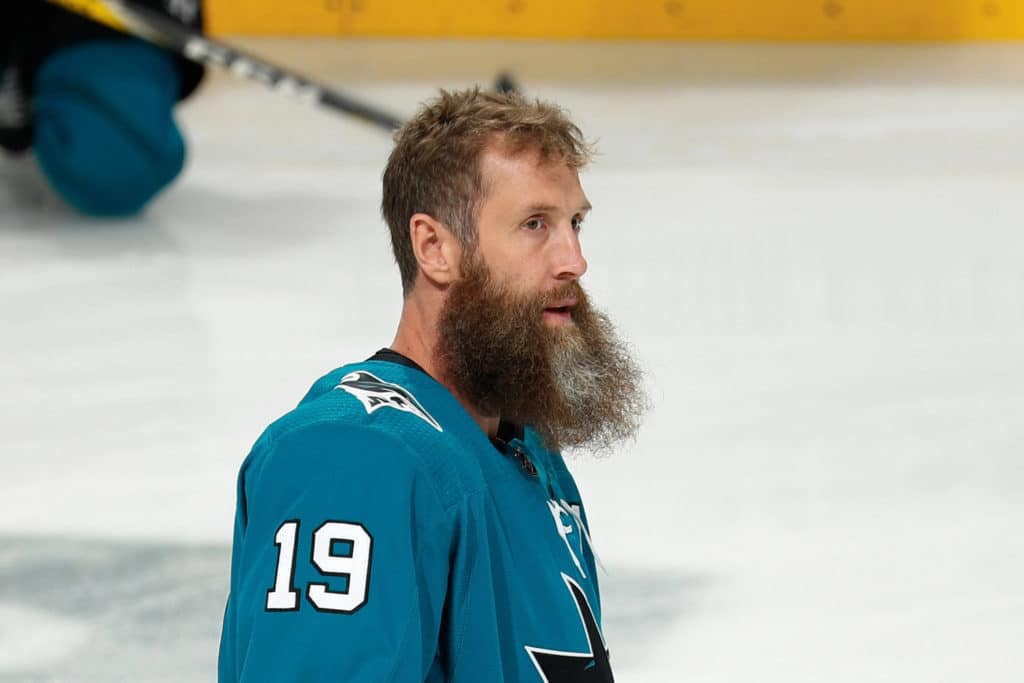
Are the Leafs better? I certainly think so, even though they have less depth up-front. Jake Muzzin was the only true top-four defenseman on the roster last season who was above average defensively. Adding T.J. Brodie gives them far more flexibility, as unlike Barrie, his skillset should complement Morgan Rielly‘s quite well, and he’s also capable of playing on a shutdown pairing with Muzzin if needed. He can shift over to the left-side if injuries occur, and if he was on the team last season, I imagine he would have played on the shutdown pairing with Justin Holl once Muzzin got injured against Columbus.
Both Rielly and Barrie are offensive defensemen who don’t belong on a shutdown pairing. I couldn’t stand watching them on the same pairing either, as the Leafs were a tire-fire in their own zone during those minutes. Keefe sure seemed to agree with me, as he ended up playing Barrie on the third-pairing come playoff time, which meant having Cody Ceci in the top-four. When Muzzin went down, the team chose to play Martin Marincin over Rasmus Sandin, as they felt like they needed more of a defensive defenseman in a lineup that already had Rielly and Barrie. Yes, Barrie was worse under Babcock, but if you think he was bringing a lot to the table under Keefe, I have no idea what you were watching.
The forward depth is now a bit of a concern. If they can accumulate enough cap space, they can certainly address this at the trade deadline, as I can guarantee that they’ll be plenty of solid middle-six forwards available. It’s not a horrible plan. By mid-season, we should have a better read on Vesey’s defensive game, what Anderson brings to the table, how much Robertson can score at this age, and how closely Wayne Simmonds resembles his old self. If they need goal scoring, they can trade for goal scoring. If they need playmaking, they can trade for playmaking. If they need size, they can trade for size. If there’s a key injury, they can make a trade to try to mitigate that.
As of October 13th, I think the Leafs have a roster that they could possibly put out there on opening night. There’s certainly room to improve, but they addressed their biggest need by signing Brodie, and Dubas won’t have to overpay for any player out of desperation. I like Holl, and I’m perfectly fine with keeping him on the roster. I like Alex Kerfoot, and I’m perfectly fine with keeping him on the roster. I like Pierre Engvall, and I’m perfectly fine with keeping him on the roster. That being said, I fully expect Kyle Dubas to explore all options. If MacKenzie Weegar or a good underrated forward is available, I won’t be surprised if he shakes this roster up even further.
Chris Johnston was on the Steve Dangle Podcast the other day and mentioned that he thinks that there’s some mutual interest between the Leafs and Joe Thornton. James Mirtle wrote in his article at The Athletic that he’s heard that “it’s now in [Thornton’s] hands”. If he’s taking a Spezza-like deal, I’m certainly interested. His numbers did drop-off a bit in terms of Evolving Hockey’s RAPM last season, but they were very strong in 2018-2019, and he’s worth a shot for a bottom-six role. He hasn’t played under 10 minutes in a game in ages, so I figure he’d start as the third line center, and they’d bump him to the fourth line come playoff time if he struggles.
The Leafs could then either move Kerfoot to the wing, move him back to center if needed, or trade Kerfoot and acquire another insurance option down the middle. He’s older and slower, but he’s been slow for years now and that’s never really stopped him from being effective. If you trust your head coach to cut his minutes if he struggles, there’s little risk here.



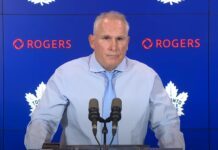











![John Gruden after the Leafs prospects’ 4-1 win over Montreal: “[Vyacheslav Peksa] looked really comfortable in the net… We wouldn’t have won without him” John Gruden, head coach of the Toronto Marlies](https://mapleleafshotstove.com/wp-content/uploads/2025/09/gruden-post-game-sep-14-218x150.jpg)







